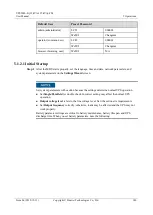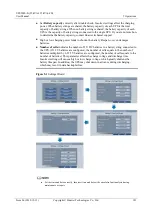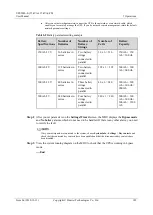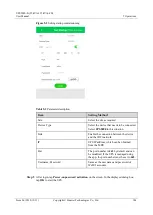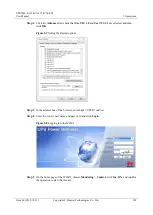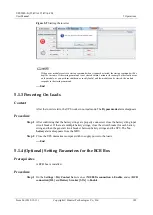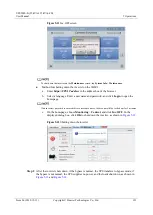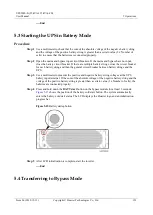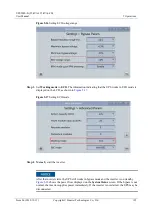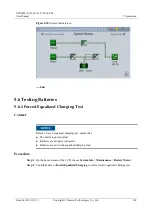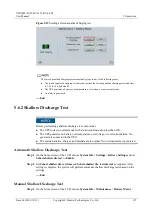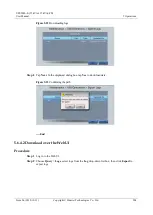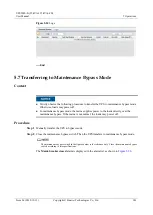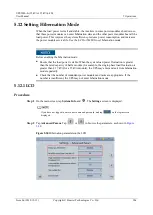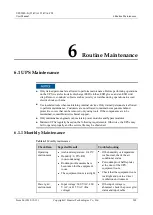
UPS5000-E-(25 kVA-125 kVA)-FM
User Manual
5 Operations
Issue 06 (2019-12-13)
Copyright © Huawei Technologies Co., Ltd.
194
Before shutting down the inverter, ensure that the bypass is normal. If the bypass is not
normal, after the inverter is shut down, the UPS supplies no power, and the loads shut down.
Shut down the inverter over the LCD or WebUI. After the inverter is shut down, the UPS
transfers to bypass mode.
If the inverter is shut down when the input voltage or frequency exceeds the specified threshold, the
UPS supplies no power, and the loads shut down.
5.5 Setting ECO Mode
Context
The UPS is set to non-ECO mode by default. Set the UPS to ECO mode when energy
saving is required.
In ECO mode, the bypass takes priority over the inverter in supplying power. If the
bypass is disconnected, the UPS switches to normal mode. The switchover time is less
than 4 ms for typical working conditions and is less than 20 ms under harsh working
conditions.
Both a single UPS and the parallel system support the ECO mode for higher efficiency.
To avoid frequent transfer between ECO mode and normal mode, do not set the ECO
mode when the bypass input is unstable or is sensitive to load changes.
ECO mode is not recommended when the load is less than 10%.
Before transferring the UPS to ECO mode, ensure that the bypass module works
properly.
Procedure
Step 1
Manually shut down the inverter to transfer the UPS to bypass mode.
Step 2
Select a value (
±5%
,
±6%
,
±7%
,
±8%
,
±9%
, or
±10%
) from the
ECO voltage range
drop-down list box, as shown in

